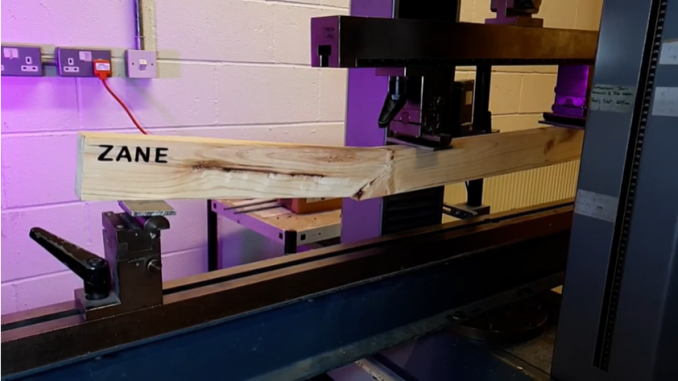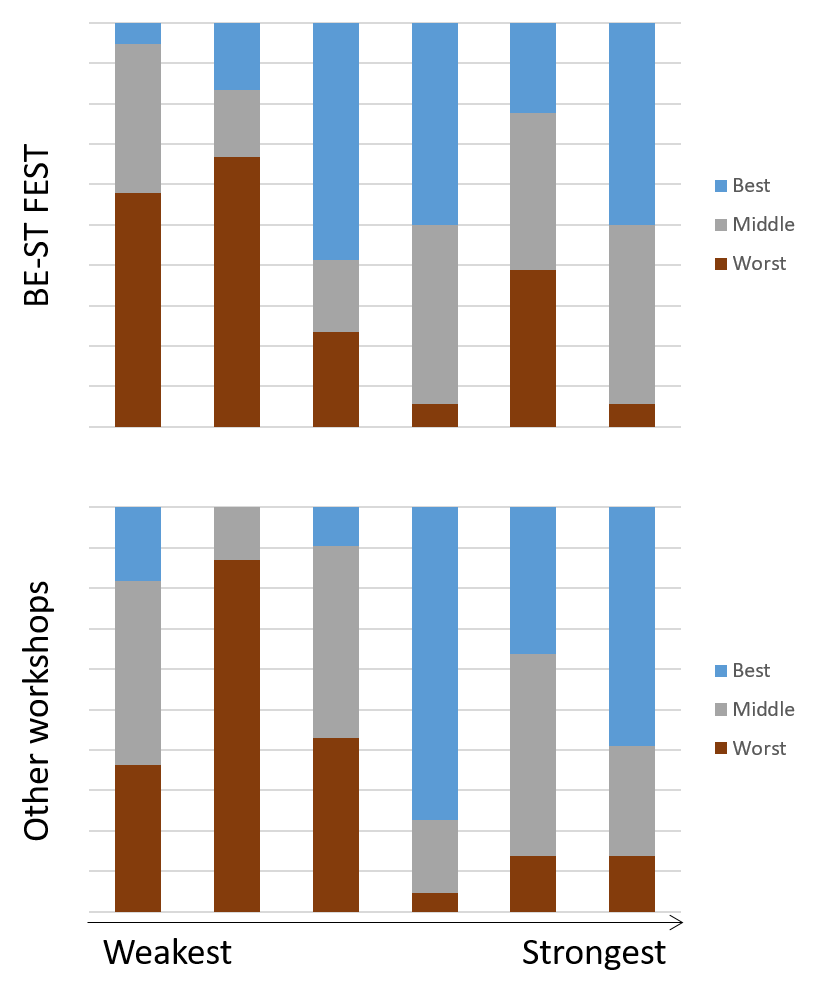
We have recently brought our “guess the strength” game to BE-ST Fest and two teaching events at NMITE and ENU. Check out your score below!
If you are one of the BE-ST players, don’t be discouraged if you find yourself in the bottom half. We gave the other players an unfair advantage – more explanation below.
| Name | Score |
| eager_larch_bison outstanding_holly_hedgehog outstanding_lime_otter Dynamic MOE | 2 |
| clever_hazel_ant eager_larch_wolf eager_rowan_wolf famous_willow_bear wandering_pine_badger | 4 |
| beautiful_fir_fox courageous_elm_woodpecker eager_holly_adder important_poplar_woodpecker thoughtful_chestnut_owl victorious_juniper_finch 10% chance of score 6 or better from random guesswork | 6 |
| brave_beech_squirrel brave_chestnut_deer curious_maple_hedgehog curious_rowan_otter determined_fir_owl famous_ash_bat handsome_rowan_fox magnificent_elm_deer victorious_fir_bear | 8 |
| amazing_willow_fox charming_poplar_ant determined_rowan_badger gifted_oak_wolf magnificent_holly_elk outstanding_birch_elk | 10 |
| proud_elm_otter | 11 |
| curious_holly_woodpecker glorious_lime_owl victorious_cedar_bison victorious_chestnut_adder victorious_rowan_wolf Growth ring width Expected score from random guesswork | 12 |
| cheerful_cherry_ant lucky_birch_woodpecker powerful_pine_deer witty_cherry_adder | 14 |
| handsome_oak_badger Density | 16 |
As you see, three participants share the top position with our measurement of dynamic modulus of elasticity (MOE). We measured MOE with the MTG Timber Grader, a machine that hits the timber with a hammer and records the resulting vibration. From acoustic velocity and the specimen density (which is known from mass and dimensions) it calculates the dynamic MOE, which is a measure for stiffness. Stiffness is moderately-well correlated to bending strength (in softwoods), which is why we can use this non-destructive technique in timber grading. In the student workshops we measured the MOE and mass of the timbers, which is why participants in these workshops had an unfair advantage over the BE-ST FEST participants. But one out of three scores on top of the list is actually from a BE-ST FEST candidate, so our real winner here is outstanding_lime_otter (even though they listed “Zane” twice)!
Density was, again, a very poor predictor for strength. In fact, it was negatively correlated in this set of timbers by pure chance. Growth ring width also yielded a poor prediction this time, which is not surprising either.
Overall, participants could identify the worst pieces quite well and were also mostly in agreement about the better ones. And the judgements made at the BE-ST FEST look very similar to the overall rankings! In many cases this is not surprising, as the pieces that looked crappy also turned out to be crappy in this set. The opinion about “Xanti” changed most between the workshops – this piece didn’t have many knots or other defects, but the dynamic MOE measurement was quite low. It failed at 3.23 kN, making it the 3rd weakest piece.


Leave a Reply
You must be logged in to post a comment.